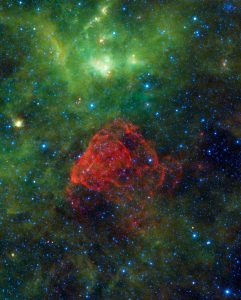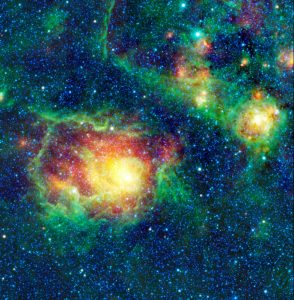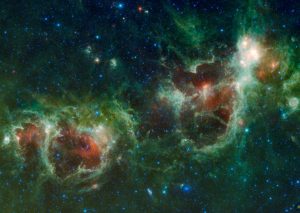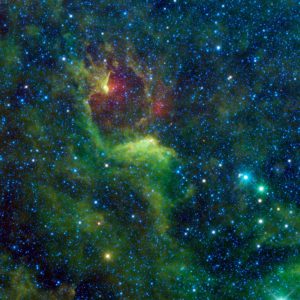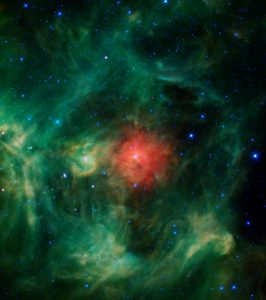Telescopio WISE
Un’Antica Supernova
Circa 3700 anni fa gli abitanti della Terra potrebbero avere visto una nuova stella brillare in cielo. Quando si è affievolita ed è scomparsa dalla vista, probabilmente è stata dimenticata, finché i moderni astronomi non hanno trovato i suoi resti, chiamati Puppis A. Continua a leggere
La Spettacolare Laguna di WISE
Una straordinaria immagine ricca di colore ripresa dal telescopio WISE mette in risalto la Nebulosa Laguna in tutto il suo splendore. La laguna è formata da nubi di gas e polveri in cui stanno nascendo nuove stelle. Continua a leggere
Il Cuore e l’Anima
In questa straordinaria ripresa del telescopio WISE vengono rappresentate le suggestive nebulose Cuore e Anima. L’immagine copre un’area di cielo dieci volte più ampia della Luna piena, nella costellazione di Cassiopea. Continua a leggere
Un Oceano di Stelle
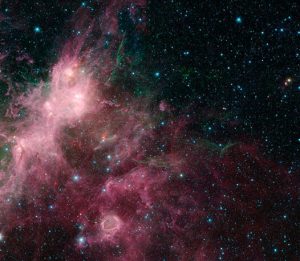 In quella che potrebbe sembrare una ripresa subacquea di un mare tropicale con coralli e alghe, un’immagine strepitosa del telescopio spaziale Spitzer della NASA mostra invece la nascita e la morte delle stelle. Qui i dati a infrarossi di Spitzer sono in verde e in blu, mentre i dati del telescopio WISE (Wide-field Infrared Survey) sono in colore rosso. Continua a leggere
In quella che potrebbe sembrare una ripresa subacquea di un mare tropicale con coralli e alghe, un’immagine strepitosa del telescopio spaziale Spitzer della NASA mostra invece la nascita e la morte delle stelle. Qui i dati a infrarossi di Spitzer sono in verde e in blu, mentre i dati del telescopio WISE (Wide-field Infrared Survey) sono in colore rosso. Continua a leggere
Riflessioni nella Croce del Sud
La nebulosa a riflessione IRAS 12116-6001 risplende di vivaci colori in questa immagine pittorica ripresa dal telescopio WISE. La polvere è riscaldata dalla luce stellare e brilla nell’infrarosso. Le nebulose a riflessione sono di grande interesse per gli astronomi, perché spesso sono luoghi in cui si formano nuove stelle. Continua a leggere
Una Ghirlanda in Cielo
In perfetto spirito natalizio questa spettacolare nebulosa ripresa dal telescopio WISE della NASA ha l’aspetto allegro ed elegante di una festosa ghirlanda, ornata di un bel nastro rosso, sempreverde e lucine d’argento. Il nome ufficiale è Barnard 3 o IRAS G159.6-18.5, ma è stata soprannominata in modo appropriato, Nebulosa Ghirlanda. Nubi come questa sono nursery stellari, regioni in cui nascono nuove stelle. Continua a leggere
